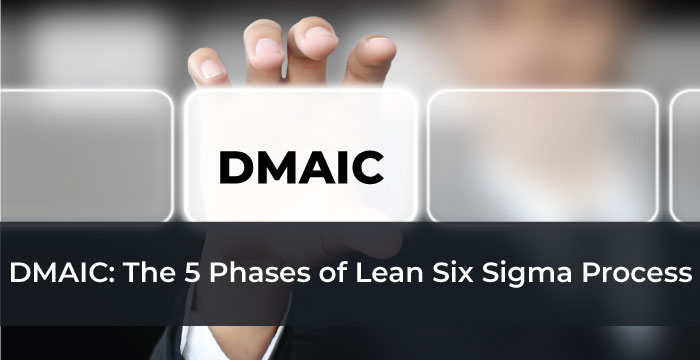
A study conducted by McKinsey Global Institute and International Data Corporation reveals that employees spend close to 30% of their time on emails. Beyond that, meetings, conference calls, presentations, report writing, and other work activities involve communicating with peers, superiors, and other colleagues.
To ensure that you communicate most efficiently and engagingly as possible and thereby enhance your productivity at work, you need to follow the 7 Cs of effective communication: Clear, Correct, Complete, Concise, Concrete, Coherent, and Courteous.
7 Cs of Effective Communication
1. Clear
Any message needs to come out clearly from your communication rather than the recipient having to assume things and come back to you for more information. This will only lead to more time being wasted on emails.
Do not try to communicate too many things in one message. This will dilute the attention of the reader. For an example of poor communication skills, look at this email below.
Bad Example:
Dear James,
I would like to talk to you about the new client’s project, which the engineering team discussed yesterday. I might need the help of John from your team.
Regards,
Kevin
Innumerable things are wrong in this email. James might not even know who the new client is or what the project is about. He probably was not part of the meeting with the engineering team.
Furthermore, there might be more than one John in James’ big team. Kevin also mentions that he wants to talk. However, he hasn’t mentioned what time he would like to talk, nor has he asked James if he would be free at any available time slots.
Here’s how this email could be made clearer.
Good Example:
Dear James,
As you may know, we have signed up XYZ as our new client. I had a meeting with the engineering team yesterday and discussed the campaign requirements for this project.
John Redden from your team did a pretty good job last time doing the social media campaign for ABC, and so I would like him to work on the XYZ campaign too. Would you be available sometime tomorrow to discuss this further?
Regards
Kevin
This email has all the information James needs to know. He can be well prepared for the meeting and also check on John’s availability and have an answer for Kevin when they meet the next day – in whichever time slot both the men are free.
2. Correct
When too many emails are being written in a day, people tend to type fast and, therefore, might make spelling mistakes. Spell check will not be able to catch it if the wrongly spelled word is in fact another word in the English language.
You also must ensure that you address people correctly and spell their names correctly. Additionally, you must ensure that the reader has sufficient knowledge and education to understand the technical terms you use in your communication.
Bad Example:
Dear David,
Further to our conservation today, I am attaching the plan for the first stage of the project. Hope the one weak deadline is okay with you and your team.
Regards
Sally
There were two glaring spelling errors in this e-mail. ‘Conversation’ was spelled ‘conservation,’ and ‘week’ was spelled ‘weak.’ Though these are minor errors, they could gravely impact the credibility of your professionalism and the brand image of the organization you represent.
Therefore, it is absolutely necessary to check all your spellings and prefixes before you send an email, especially if you are sending it to a client or a vendor outside of your company.
3. Complete
A complete message will have all the information the reader needs to know to be able to respond or take action. If you require the reader to take some action, ensure that you have a ‘call-to-action’ in your email and also communicate the urgency of the task in question.
Incomplete messages lead to iterations, a lot of back-and-forths, and a waste of time and effort on both ends.
Here is an example of an incomplete message.
Bad Example:
Hi all,
Let us meet tomorrow to discuss the product launch event. Please be there on time.
Thanks
Chris
There is no mention of the time of the meeting scheduled or the location, and neither is there any set agenda. The recipients of the email would have to write back or call back to Chris to clarify.
Good Example:
The best way to have written this email is:
Hi all,
Let us meet tomorrow at 11 am in Conference room 3 to discuss the product launch event. We will have to decide on the keynote speakers and complete the event invite draft tomorrow. Please be there on time.
Thanks
Chris
4. Concise
More often than not, people tend to write four sentences in a place where they could have finished the message in 2 sentences. This wastes the time of the sender and the receiver and, in turn, limits their productivity too.
Furthermore, try not to add fillers such as ‘I mean,’ ‘sort of,’ ‘for instance,’ ‘basically,’ etc. Your message needs to be accurate, to the point, and crisp.
Here is an example of a bad email.
Bad Example:
Hi Suzanne,
I think we need to talk about the CSR campaign; I mean the one which we need to do as a quarterly exercise. I think it is a great way of enhancing our brand image. Basically, it would just be a visit to an orphanage, but we can sort of do other things too.
For instance, we could take the kids out for a short trip to a nearby park or zoo. Let us sit and talk tomorrow.
Regards
Jennifer
The mail is full of fillers and extended phrases wherein she could have finished the email in just two sentences, such as the one below.
Good Example:
Hi Suzanne,
I need to discuss the quarterly CSR campaign with you. Let us take the kids to a nearby park or zoo instead of just visiting them. This will help enhance our brand image. We’ll talk in detail tomorrow.
Regards
Jennifer
5. Concrete
You need to believe in you what you want to convey to the audience. Concreteness is a quality that needs to come to the fore, especially during the marketing or advertising campaigns. There need to be details that capture the audience’s attention, not bore them.
Bad Example:
“Hilltop Resort is the best resort. Do come to us on your next holiday.”
This is a vague ad message. It is made to sound like just another resort advertisement among a hundred others. The audience will never remember this ad message. There are no concrete details to take away from this message.
Good Example:
“Hilltop Resort is the jewel of the western hills. Take a break from your work. Escape from life’s chaos and stress. Relax and rejuvenate yourself at Hilltop. Go back fresh and energized!”
This message gives you visualization details. The reader can actually imagine being in a beautiful resort breathing fresh air and swimming in a pool instead of slogging away at his or her office. That is a concrete message conveyed to the audience.
6. Coherent
Your message needs to have a logical flow. All sentences in your email or report should be connected to the previous one and stick to the main topic. Without coherence, the reader will easily lose track of what you have conveyed.
Bad Example:
Dear Nam,
Thanks for submitting the industry report. Finn will give you some feedback on it. Finn also wanted to find out if you will be available for the client meeting tomorrow. We will be discussing the budget for the next phase of the project.
Regards
Shirley
The email was supposed to be about the industry report which was submitted and the feedback for it. The question about the meeting had come out of nowhere and will now distract Nam and her priorities.
Good Example:
Dear Nam,
Thanks for submitting the industry report. Finn will give you some feedback on it. You will be receiving an email from him with detailed comments.
Regards
Shirley
This email talks only about the report. Therefore, Nam knows that her report has been viewed and needs to wait for feedback. There are no other distractions. The query about the meeting must have been an entirely different email.
7. Courteous
Being courteous is of profound importance in a corporate setting. Individuals who work together are not necessarily friends; therefore, to maintain a healthy working relationship, being courteous is necessary.
Hidden insults and aggressive tones will only cause trouble among individuals and result in reduced morale and productivity.
Bad Example:
Hi Drew,
I really do not appreciate how your IT team ignores the requests of my team alone. My team is also an important function in this organization, and we have our own IT requirements. Can you ensure that your team responds promptly to my team’s requests hereon?
Regards
Stanley
This email is condescending, judgmental, and disrespectful. Drew might now order his team not entirely to respond to your team’s requirements. Try this instead:
Good Example:
Hi Drew,
I understand that the IT team is swamped with work and gets requests from every department in the organization. My team, however, is working on a high-priority project, and I would greatly appreciate it if you could ask your team members to respond to my team’s queries promptly and help us complete this project on time.
Please do let me know if you need anything from me.
Regards
Stanley
As a result of the polite request, Drew will likely feel appreciated and important, and he will definitely ask his team to help your team out. Work gets done, and everybody is happy too.
Conclusion
To sum up, working with other individuals, be it within your team or other teams in the organization is the norm in today’s corporate setting. Therefore, communication becomes a critical skill. When you communicate well, you become more efficient, tend to command respect among your peers, and maintain a healthy relationships with your colleagues. Keep in mind the 7 Cs of communication and accelerate your career growth.
While you are, do check out these popular courses by Invensis Learning that will help you advance in your professional career.
————————————————————————————————————————————-Organize Corporate Group Certification training for your teams around the world
Invensis learning provides In-person and live virtual instructor-led corporate training program customized for enterprise teams who wish to train their employees on specific aspects of their job processes or responsibilities. The corporate training by our expert certified trainers will enhance your learning curve and enable your teams to utilize their skills to meet industry standards.
- Experienced & Industry Specific Trainers
- Lifetime LMS access
- Deliver sessions across continents via In-Person/ Virtual Instructor-Led Training
- Customized Training————————————————————————————————————————————-














